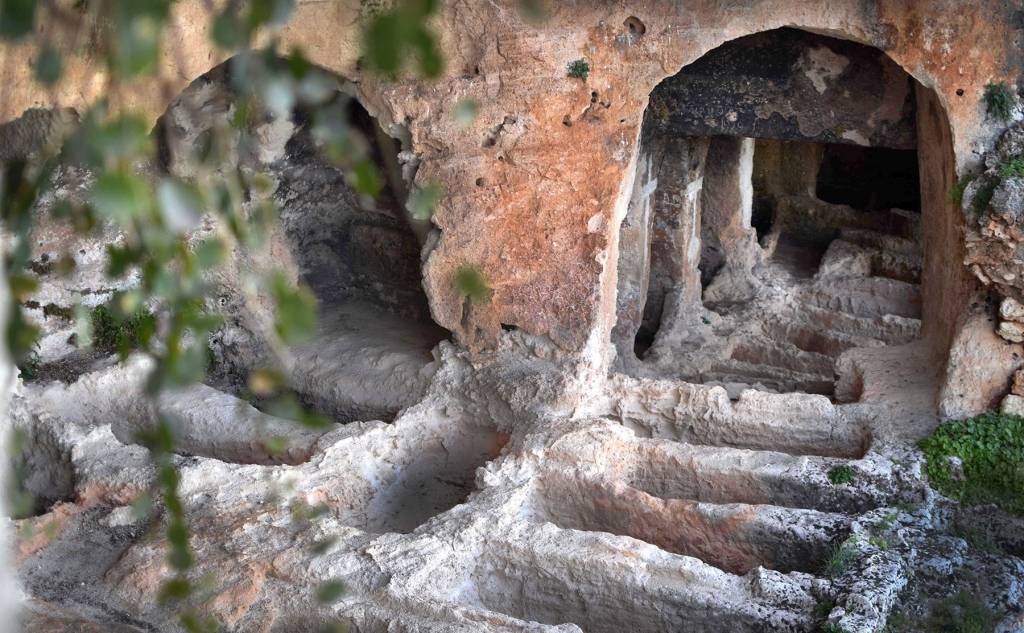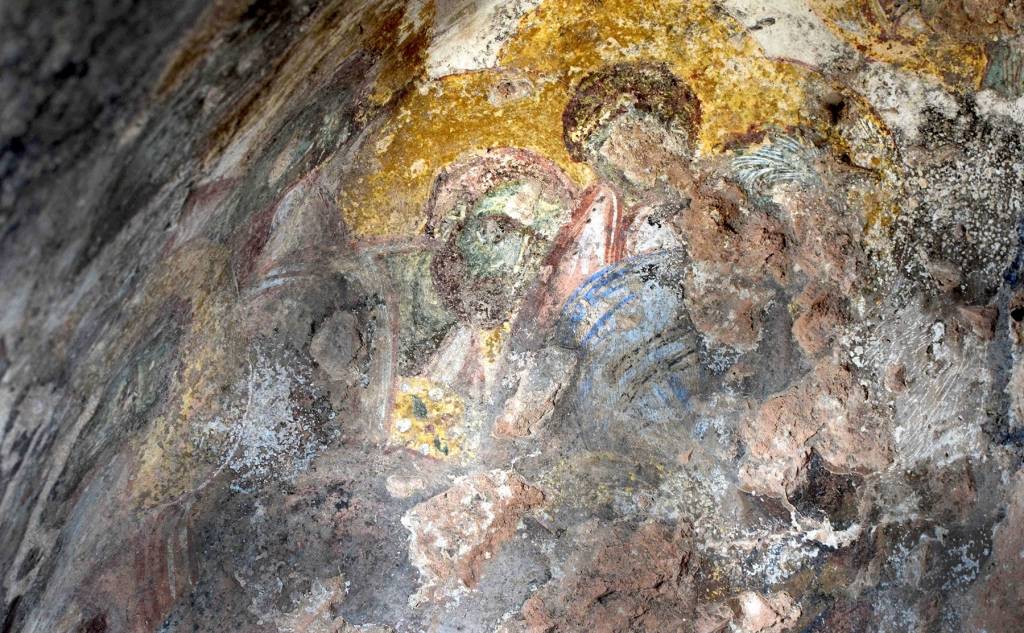Agios Onofrios’ Catacombs in Methoni
Agios Onofrios’ (Agionoufris) Catacombs are located at the 20th kilometre of the Methoni-Pylos national road, on the left turn for Agios Athanasios. Specifically, they are located on the slope of the mountain of Agios Nikolaos. The catacombs are the oldest Christian cemetery ever found in Messinia.
They were probably founded in the 4th century and were in use until the 6th century, while much later, during the 12th-13th centuries, their space was used as a hermitage when frescoes were painted. In a shallow cave, burial openings are carved into the natural limestone rock, as well as fragments of hagiographies on the walls. The Early Christian cemetery consists of six chambers and includes arcosolia and pit tombs. At the height of the genesis of the arches of the arcosoles, small niches are opened for placing lamps. At the same time, there are benches and banks of offerings, constructions associated with the funerary cult on the sides of the chambers. Visitors can also see cisterns carved into the soft rock and arched rooms where hermits have lived since the 5th century. The cemetery was turned into a hermitage during the Late Byzantine times. Then a wall was built in front of the first chamber, which was additionally decorated with new frescoes, a few parts of which have survived. The Agios Onofrios’ catacombs show several similarities with the Early Christian catacombs of Milos and those of Southern Italy and Sicily.
The Frankish and Venetian conquerors quarried the eastern part of the cemetery in order to use the enormous ashlar stones in the Castle of Methoni. Thus, instead of the underground, labyrinthine monument, some cavernous dents remained on the western slopes of the porous rock.









